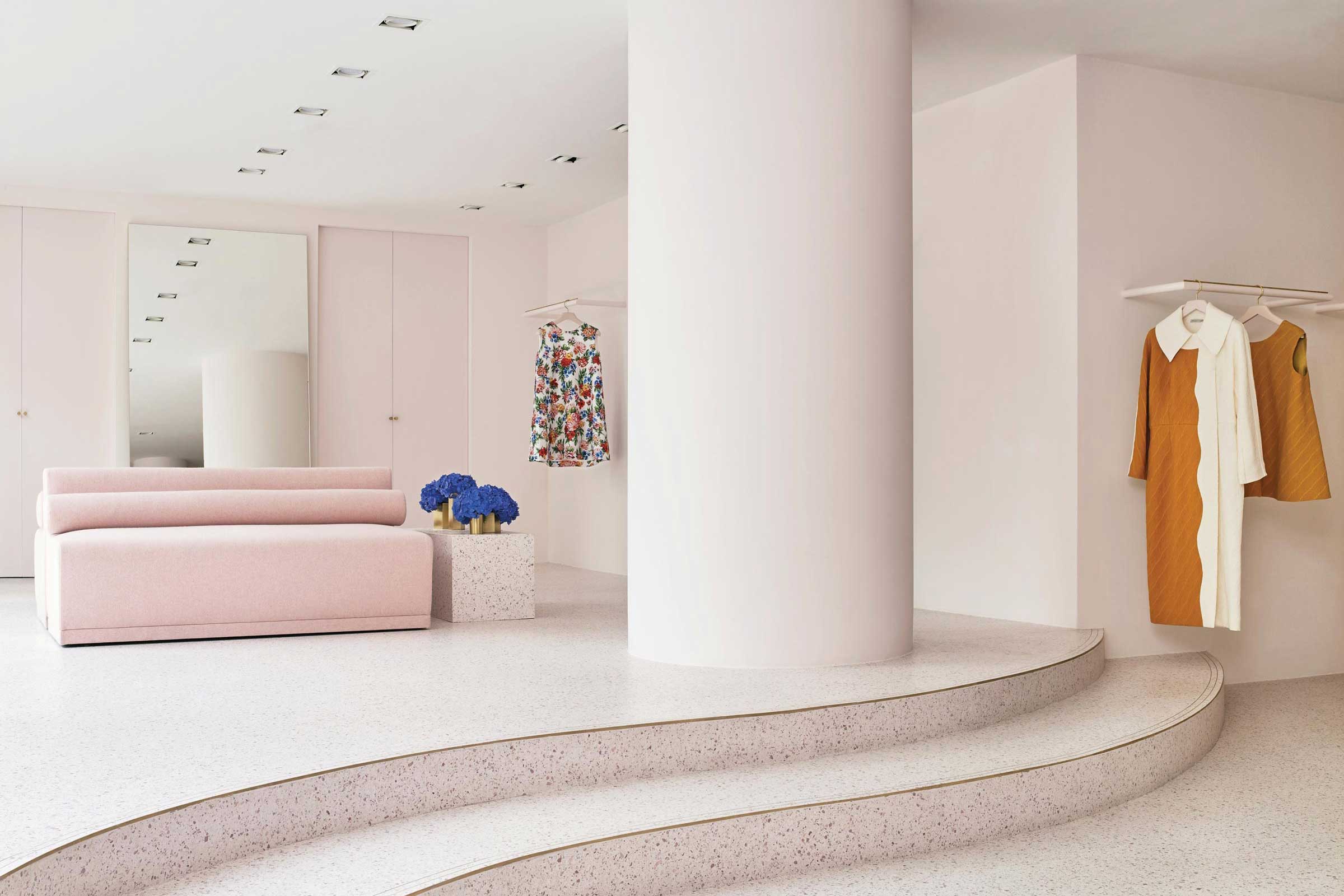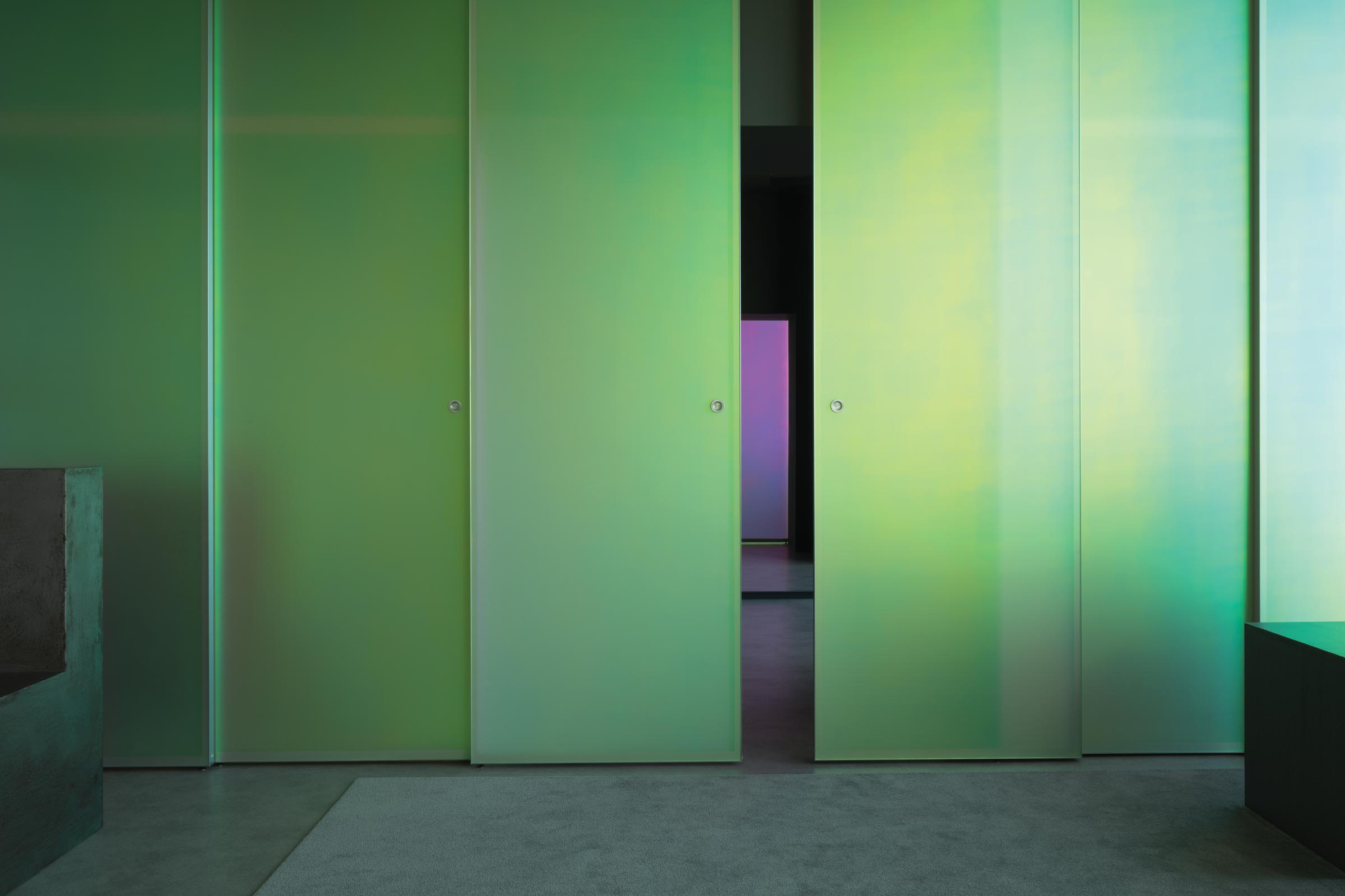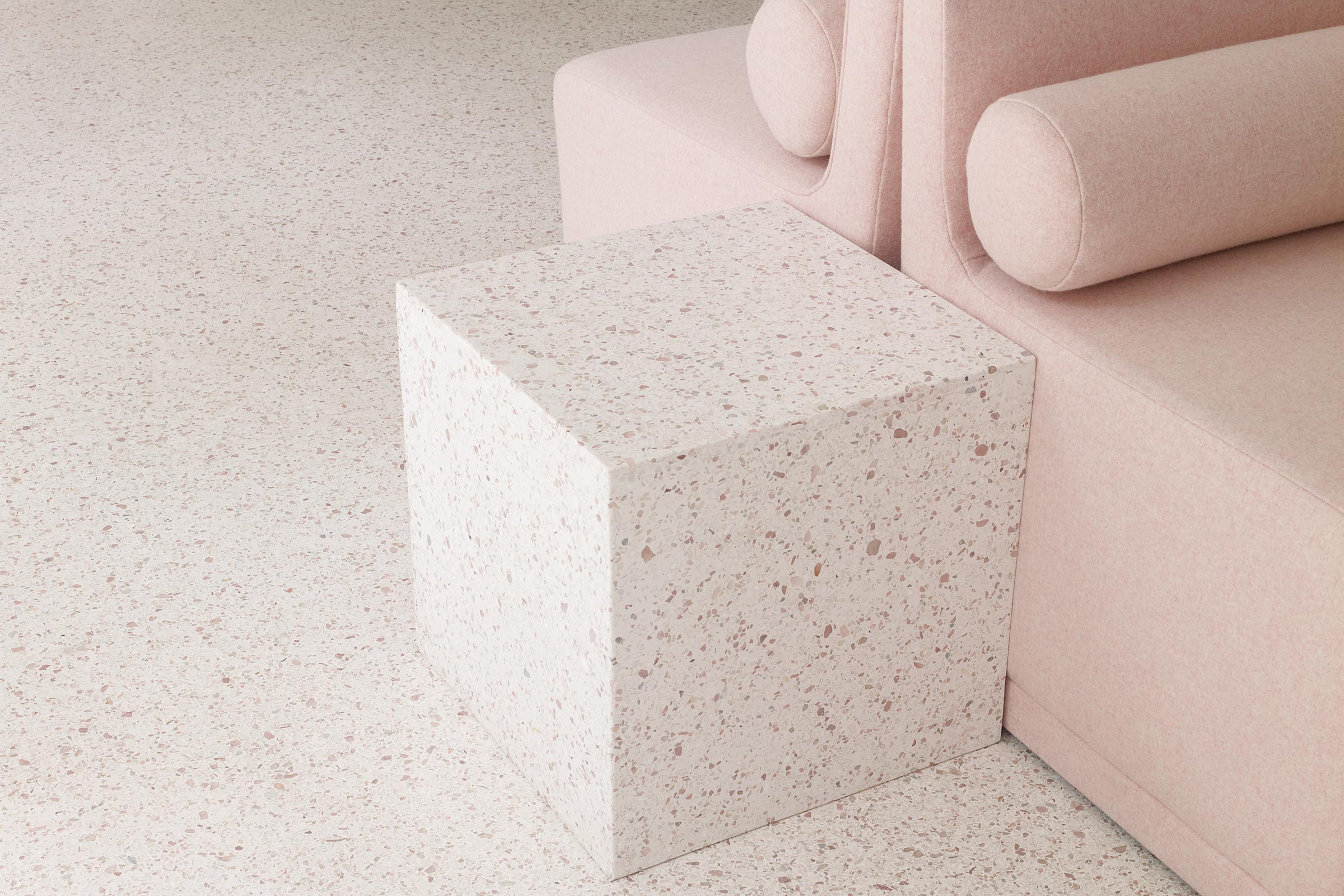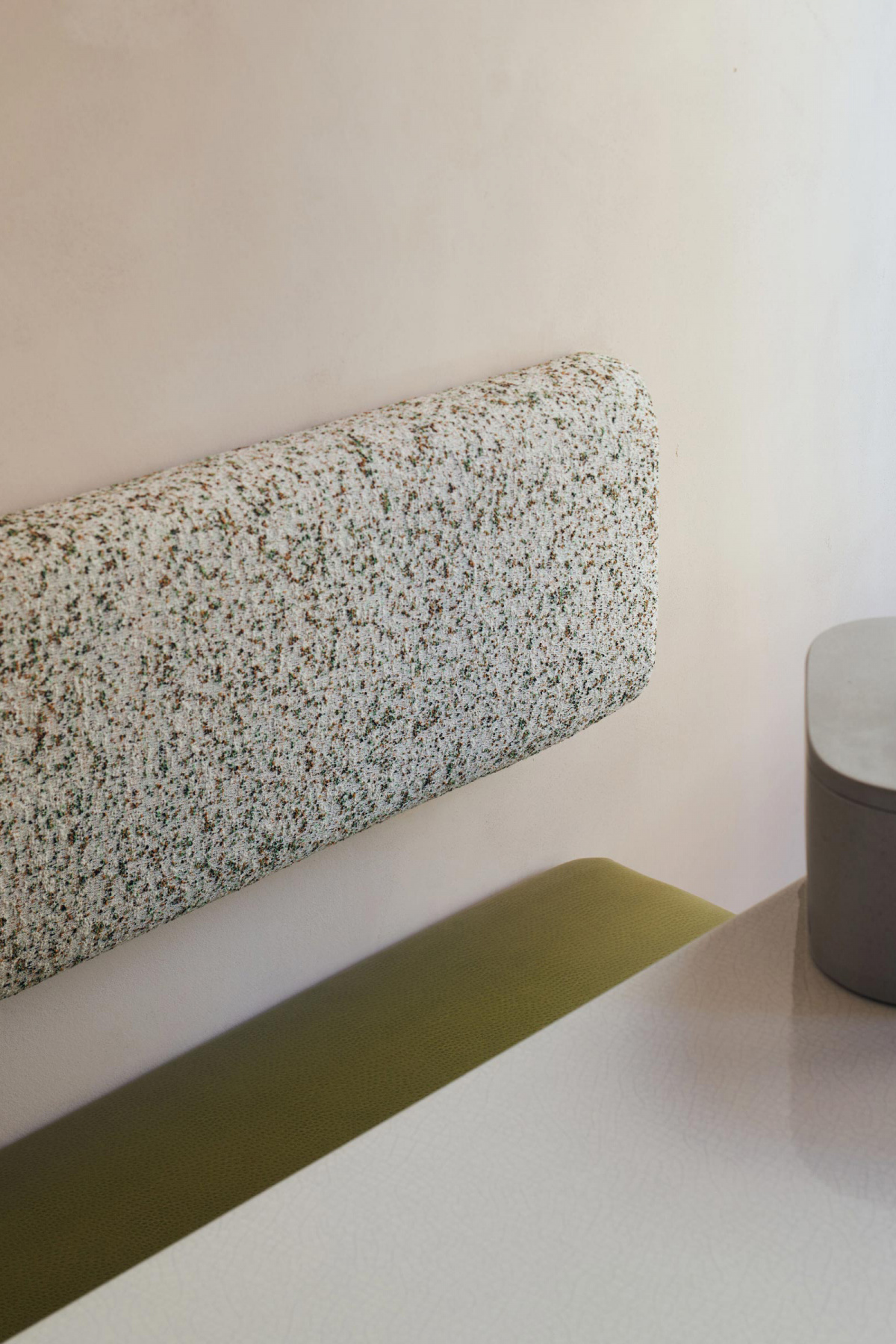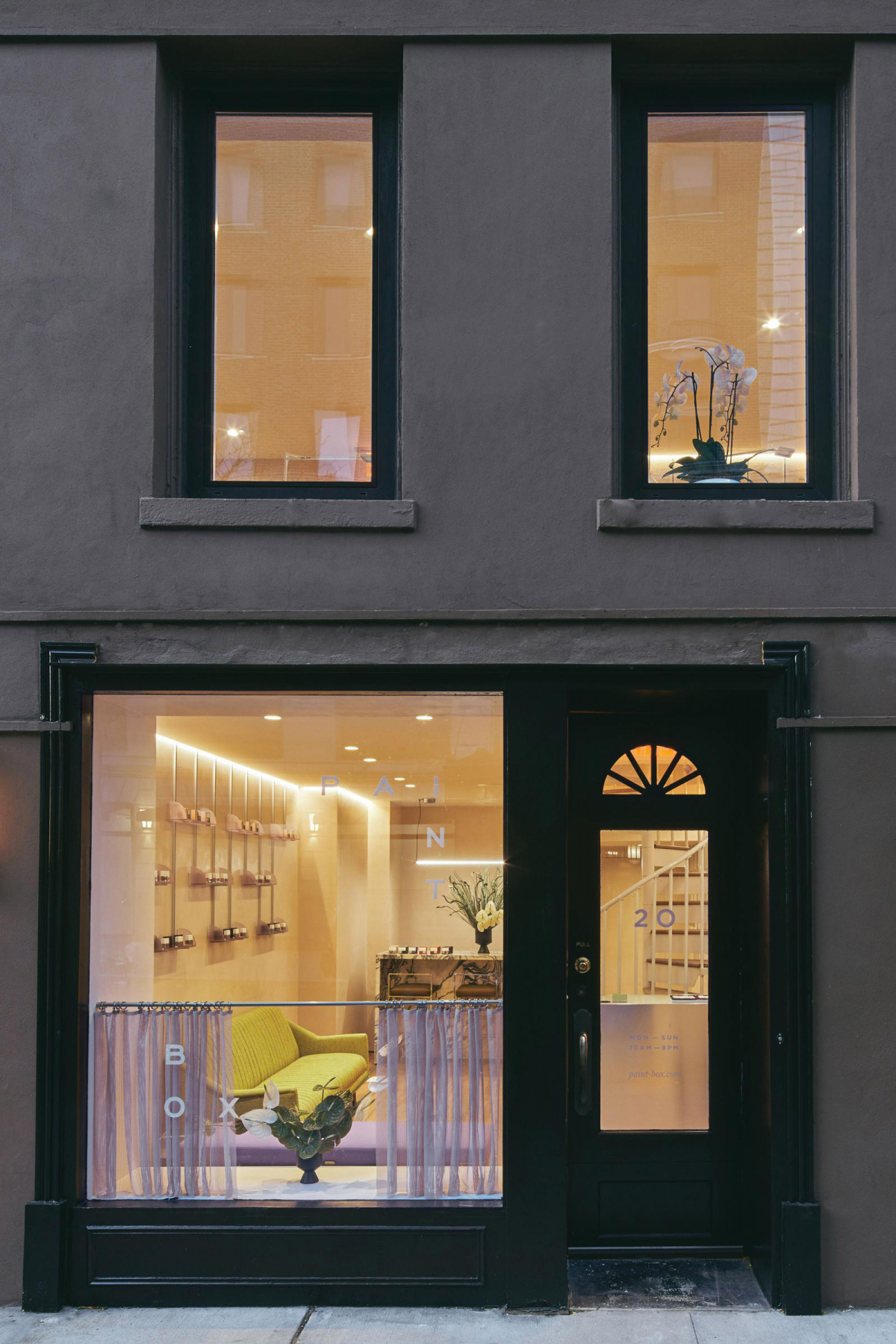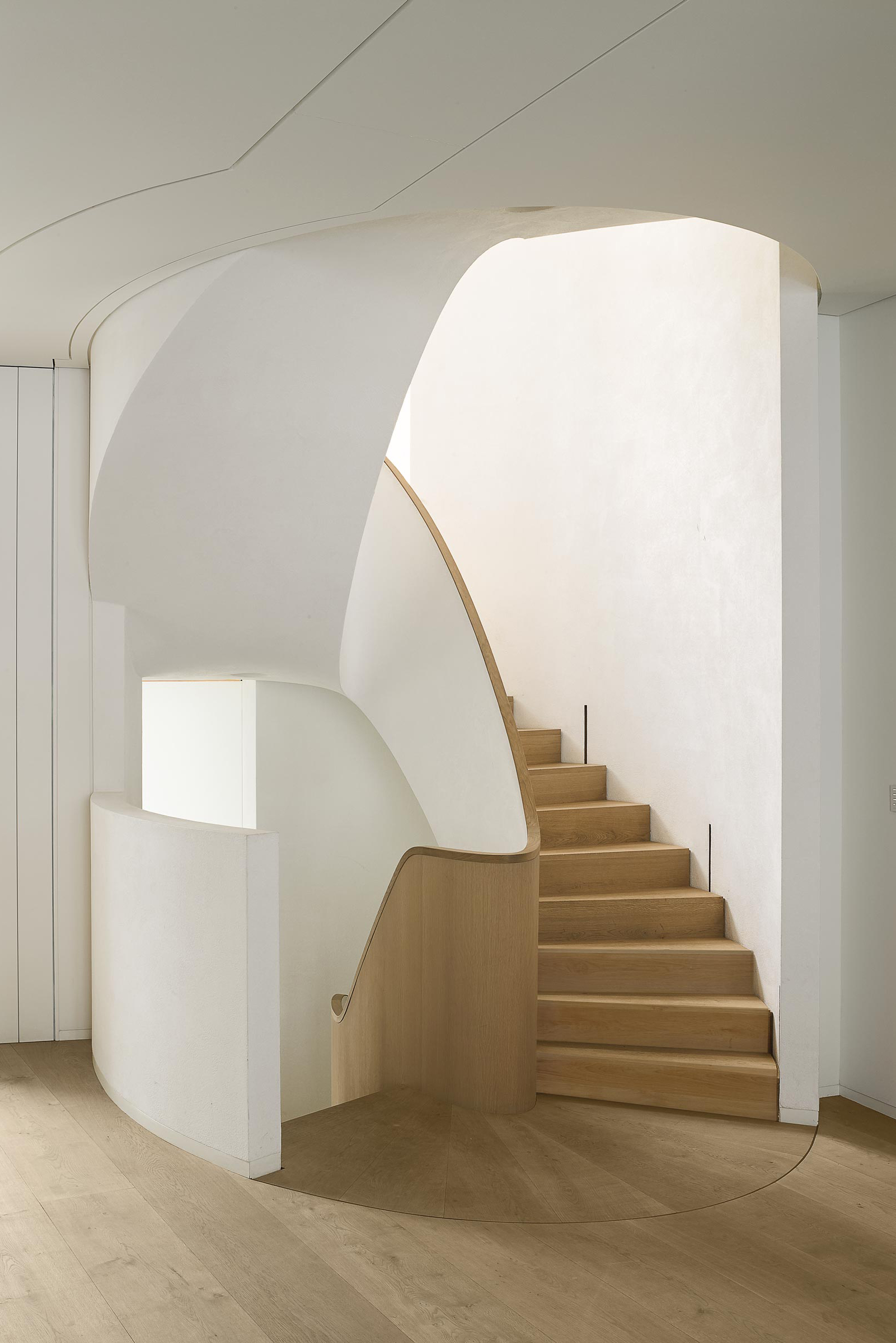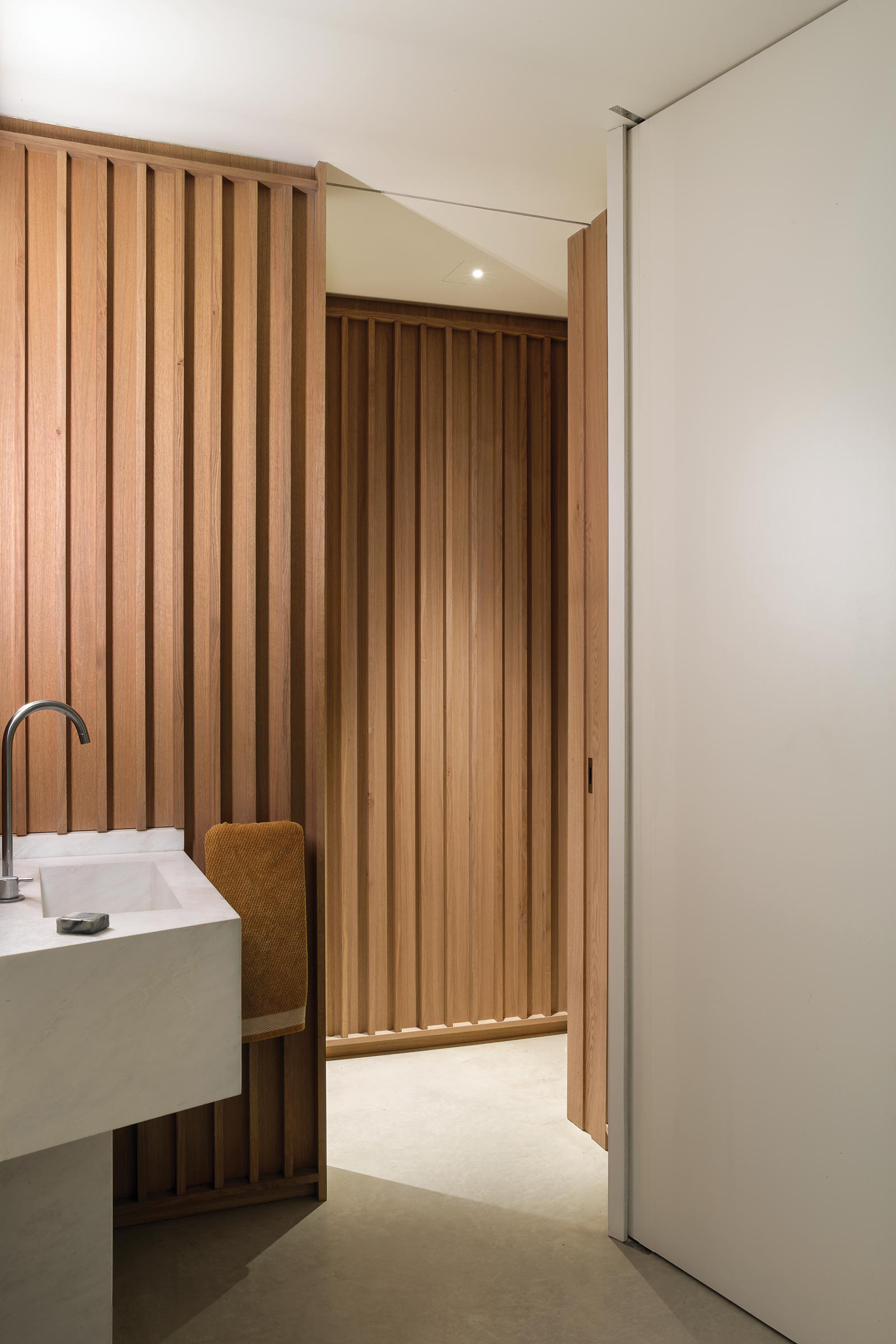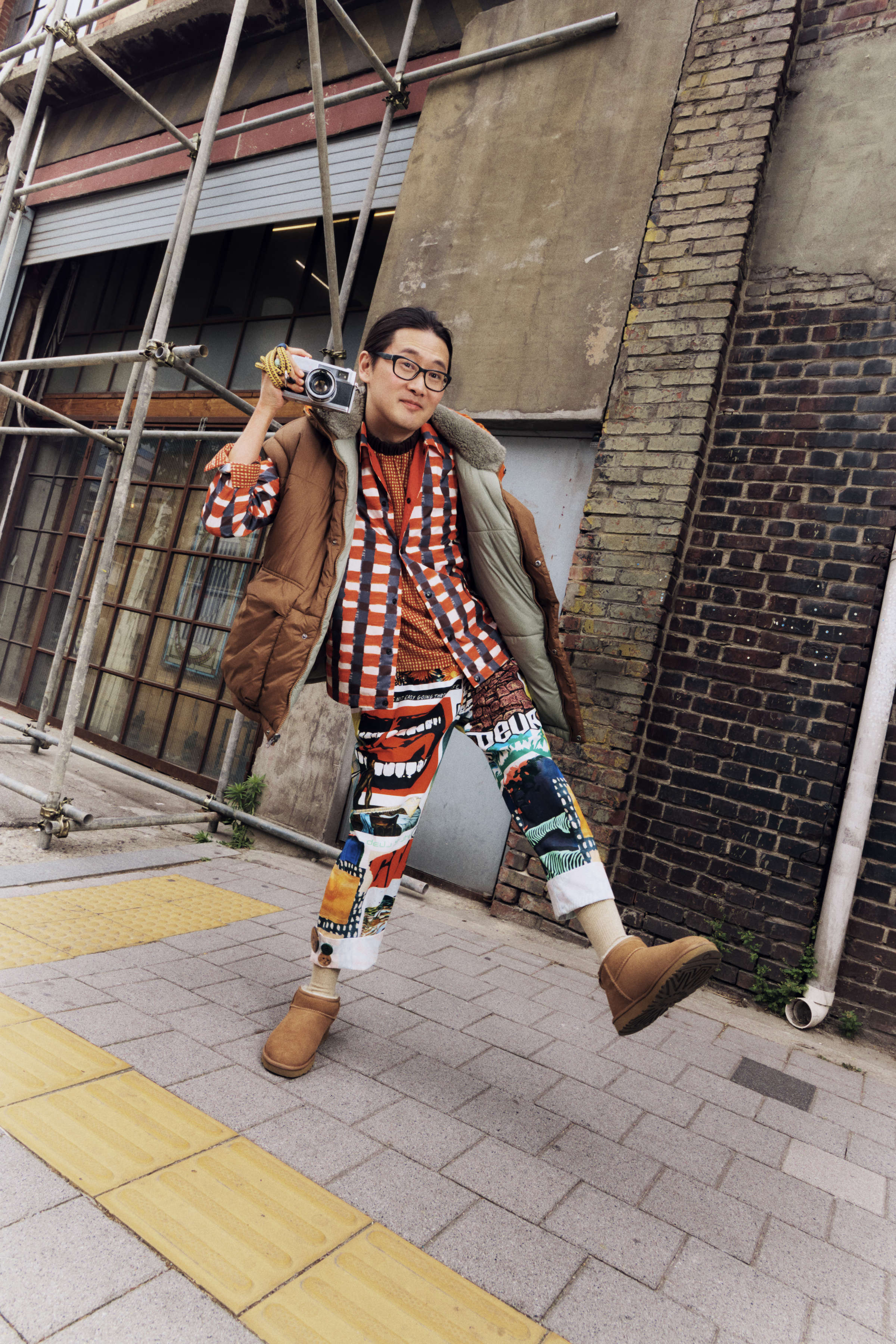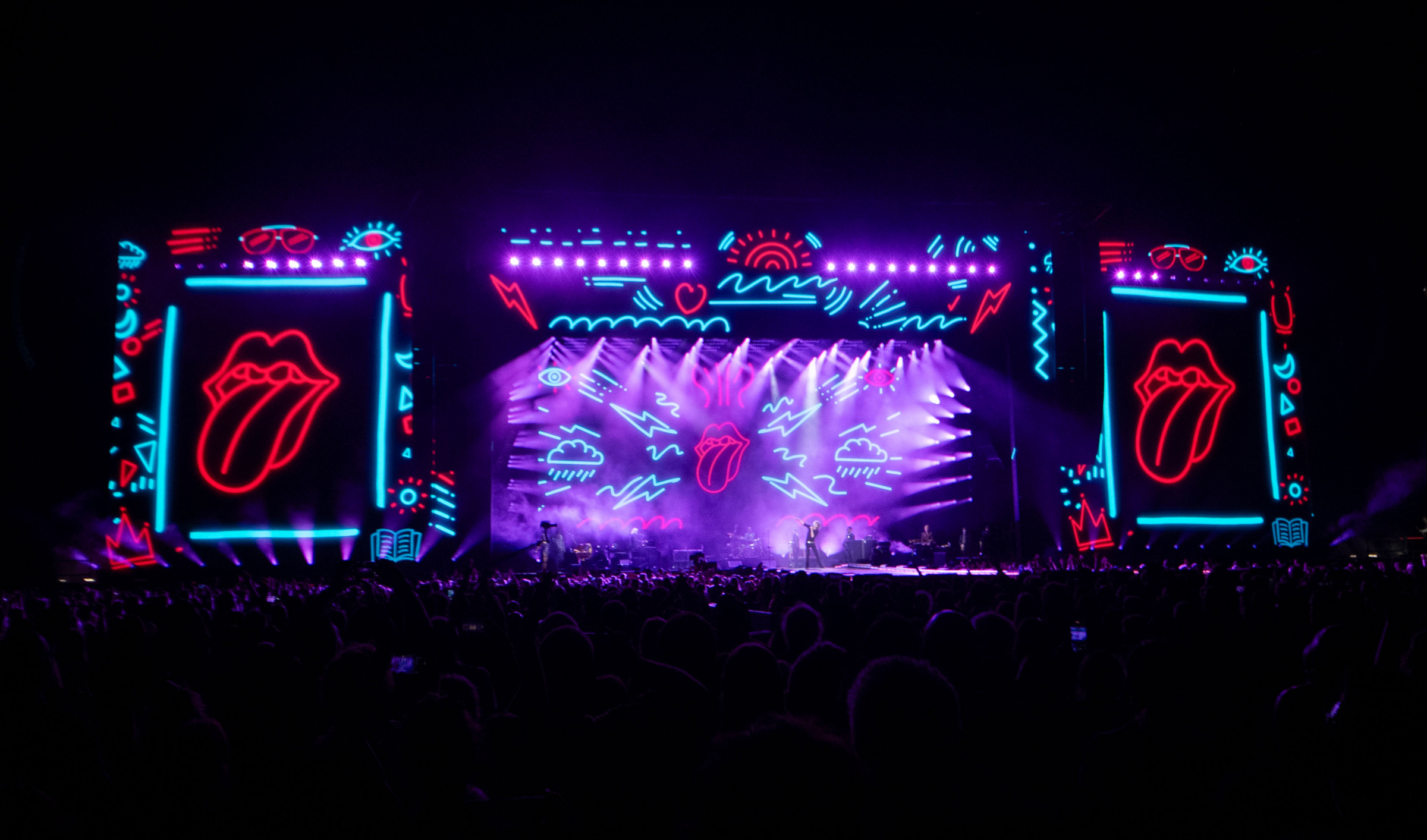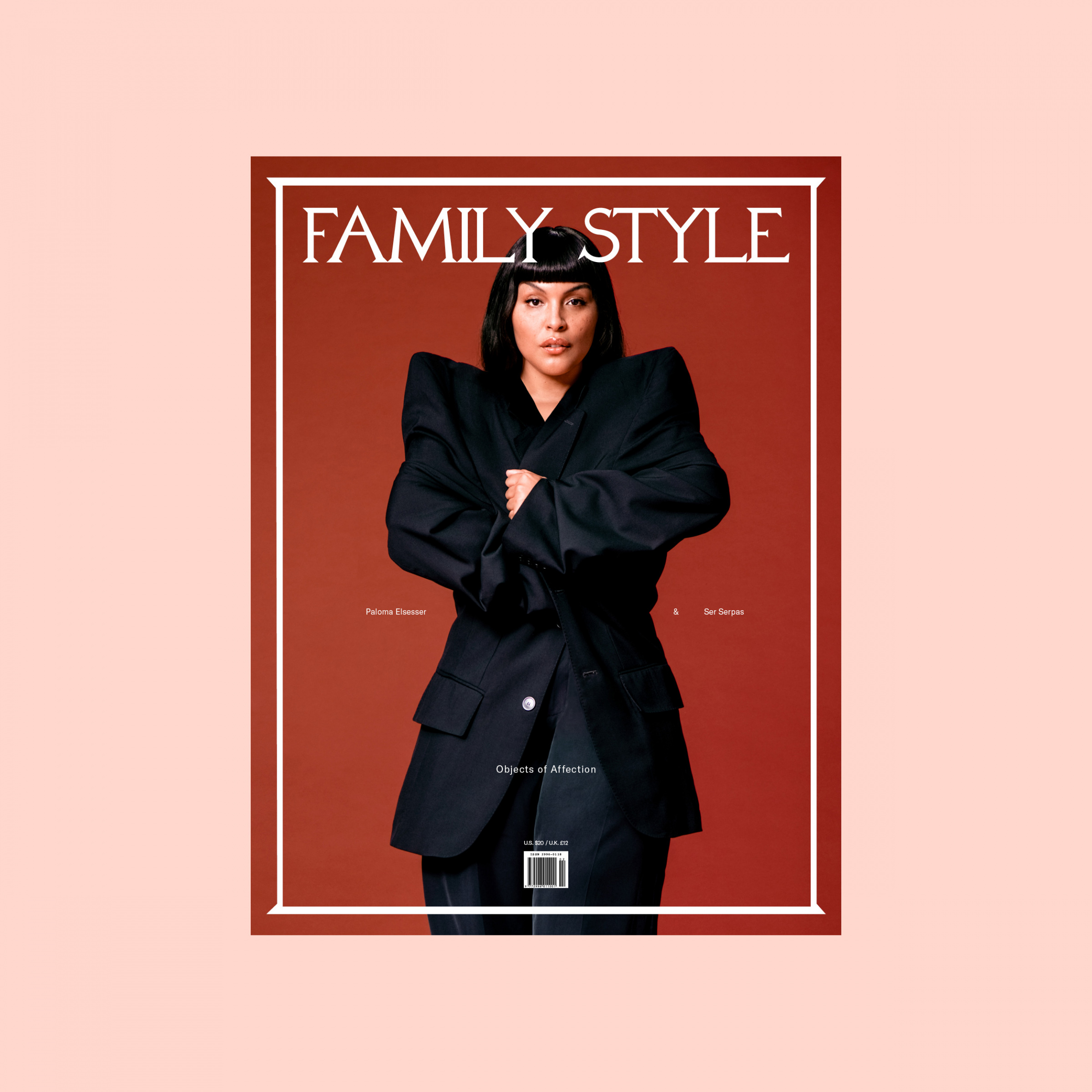Sitting with a bunch of new friends in the new Soho House in New York’s Meatpacking District in 2004, a young Fran Hickman felt at home for the first time since she’d left the UK.
The realization that the design of a space could have such a profound impact on our emotions and behavior prompted her to give up photography, a career she’d been pursuing since her teens, in favor of interior design.
Today Fran’s London-based interior and architectural design studio, founded in 2014, handles projects all over the world and has a clutch of awards to its name. But what motivates Hickman remains the same—creating spaces that shape how we feel and act.
Working closely with clients to weave narratives from their backstories combined with a deep-dive research process that encompasses books, symbolism, mythology, exhibitions, and photography, she has worked on everything from Goop’s European brick-and-mortar store to a members-only workspace and social club in Dubai.
In every project, color and light play a starring role in sparking joy and making interiors feel like home.
- Inspired by Japanese design and architecture, Fran used a limited palette of materials and dichroic glass that changes color depending on the light and where you stand when creating Farfetch, a ready- to-wear dressing salon in Tokyo that involves a change of form, color, and personality in the process of dressing. She says the rainbow-hued doors brought joy, possibility, light, and color to that process. Photo by Annabel Elston
Tell me a little bit about your background.
My father—a property developer—built barns, made furniture, collected art and antiques, and loved classic cars. He has always been demonstrably creative, so my interest in design comes from him. My mother had six children (I am number five) and has always been very bookish with a real appreciation for words. My love of storytelling comes from her.
When did you first know you wanted to become a designer?
I thought I wanted to be a photographer and studied photography at school, but my mother encouraged me to broaden my focus at university, so I took media and cultural studies at London College of Communications. We learned about art, politics, philosophy, and global history. It was fascinating.
Then I went to study photography at Parsons in New York and met an eclectic group of people who used to gather at Soho House. It became a sort of communal living room, a second home, at a time when I felt quite homesick. Creating spaces where people could come together like that struck me as something really powerful.
How you get into design then?
I studied interior and spatial design at Chelsea College of Art, which was very conceptual, and at KLC (School of Design), which was more practical. I worked for design firms like the Soho House Group and Colefax and Fowler before setting up on my own in 2014.
- Inside the Emilia Wickstead retail space in London. “In order for it to be really good, it should be personal,” Fran Hickman says. “That involves quite a lot of deep thought and reflection—even on commercial projects, where we often ask probing questions about the vision or purpose of a business.” Photo by Annabel Elston
How would you describe your aesthetic?
When I was growing up there were incredibly successful interior designers like Kelly Hoppen with a very specific aesthetic that they rolled out globally. I have huge respect for that, but what makes this job interesting to me is that each space is different in terms of geography, history, client, and objectives.
In each case there is a different problem that requires a different solution. I try to tell stories through my work. I use materials, color, and furniture to bring the story of the brand or homeowner to life in a three-dimensional space.
How much of being a great designer is creative brain versus business brain?
I have brilliant creative friends who don’t run businesses because that’s not their strength and equally brilliant friends who run businesses and are not creative. When you want to run a design business you either have to do both or recognize your limitations and plug the gaps by hiring people who are better than you.
Teamwork is so important.
- Fran designed Manhattan’s Paint Box interior with purple, green, and yellow and chose a contrasting black for the exterior of the nail bar. Photo by Alice Gao
- “To capture that joy and sense of connection we looked at Josef Albers’ Interaction of Color and the way colors change depending on what they are surrounded by—a bit like people,” says Fran Hickman of designing Paint Box. Photo by Alice Gao
What’s your team like?
There are eight of us and I’m really happy with that size.
We have been bigger, and there are industries where scale makes sense, but what we do is so bespoke that we need to stay relatively small to deliver the attention to detail that’s required.
RELATED | Sherry Dennis is Evolving Hospitality Design in a World of Boutique Hotels
Everyone comes from a design background of some sort; two of our junior designers came straight out of KLC School of Design, but we also have former management consultants and an art dealer. We have people from France, Belgium, Spain, America, and India, so we’re a pretty diverse bunch and speak a few languages between us.
Who does what? How do you divide and conquer?
I oversee every project, but I focus my energies on the concept and setting direction at the beginning. I have four designers and an architect, and I have people to run the business—the accounts and marketing.
It works really well and it’s a lovely team. We have a kitchen and take turns making lunch. We eat together every day.
- This Notting Hill family home was designed for a film director and her husband. Photo by Annabel Elston
- White and wooden elliptical volumes give this Notting Hill home a lyrical quality with clearly defined edges. Photo by Annabel Elston
Was there ever a time when you had a particularly difficult client or project?
Residential spaces can be quite emotional. Whereas commercial interior design is part of a business strategy, in residential projects we are pinning ideas to the relationships between the people who use the space, and that can be complicated.
You often find yourself playing therapist to couples or negotiating families’ differing memories of a childhood home. In the end all we can do is help clients keep it all in perspective and deliver on our promises.
Where does emotion fit into your interpretation of good design?
A chair is a good example.
It’s a piece of furniture you have a very intimate relationship with; it comes into close proximity with your body and physically supports you. Comfort is an incredibly important part of emotion, as well as proportion and clarity. Simpler things are easier to process—emotionally, mentally, and physically.
Good design is something you can rely on. It’s dependable, but it also sparks joy and has a little humor.
Do you have a design “routine” when approaching a project? You talk about collaborating with your clients to tell stories; how does that work?
I start in research mode—that might be diving into the client’s archives or researching around a subject or theme. I have a book on symbolism I often dip into; I’m really interested in the meanings behind words, images, and objects.
My research is very visual. I probably have about 60,000 photographs on my phone, which is absurd but very helpful. I involve the client to get their input and then it’s about pulling the most interesting strands together to tell a coherent and engaging story.
You say this approach takes courage on behalf of the clients. Why?
Because it’s quite introspective. In order for it to be really good, it should be personal. That involves quite a lot of deep thought and reflection—even on commercial projects, where we often ask probing questions about the vision or purpose of a business.
That can be difficult. It’s also a significant investment, so it’s a big commitment to something that isn’t always very tangible from the outset.
Run through a typical day for you.
I spend about a week out of the office in any given month. I might be onsite in New York, on the East Coast, in the Middle East, or in Tokyo, depending on the project. If I’m in the office I tend to get in at about 9.30, which is a civilized start to the day. I usually begin with business-related matters and then move through each project in turn addressing anything that needs my attention. I group my external meetings so I can commit to being in the studio at least three days a week.
How many days off have you taken in the past year?
If we’re talking about a proper day off where I haven’t even checked emails probably only between Christmas and the New Year. That’s the only time I can afford to switch off. Other than that I need to be available to my clients.
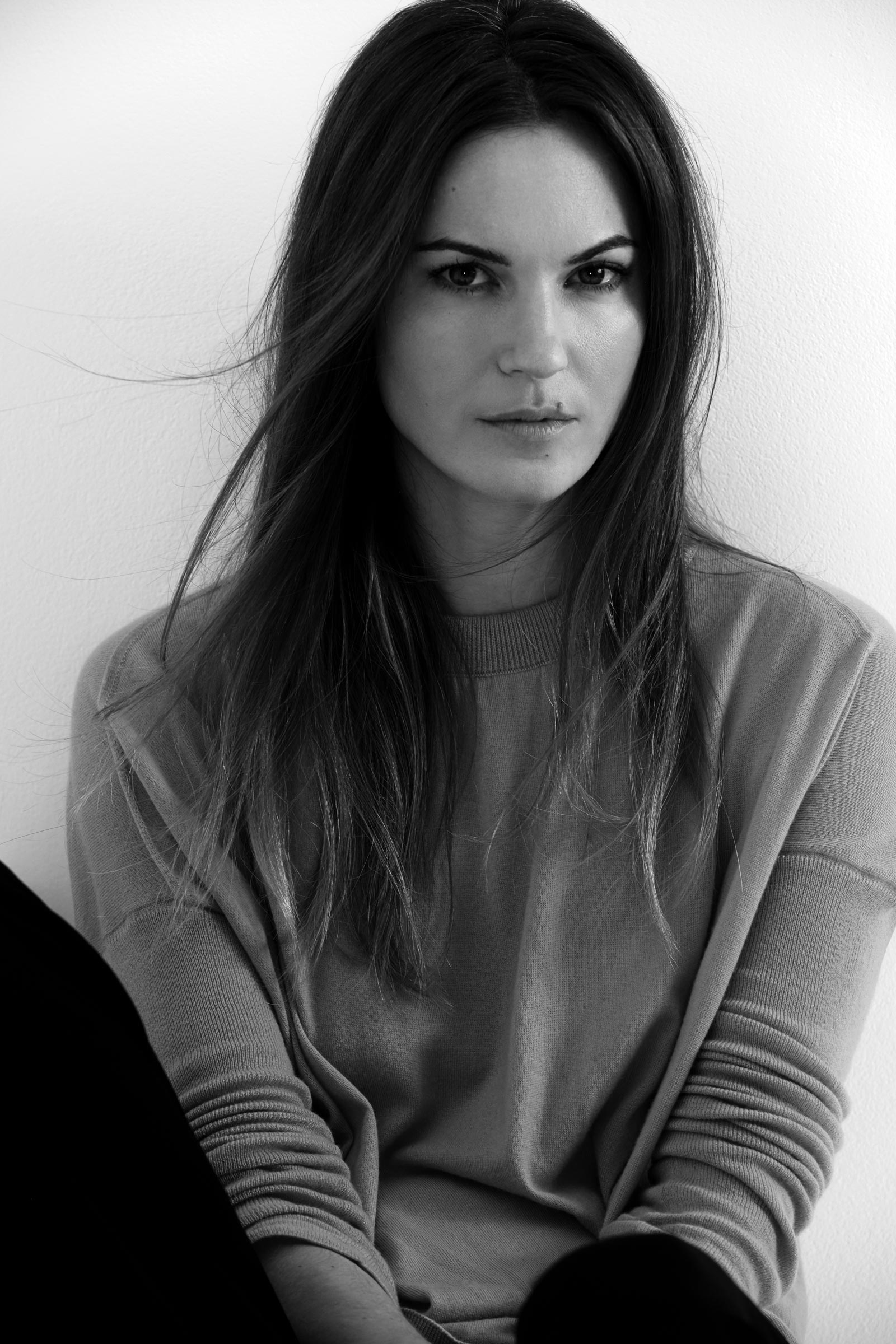
“Good design is something you can rely on,” Fran Hickman says. “It’s dependable, but it also sparks joy and has a little humor.” Photo courtesy of Fran Hickman
Tell me about how you used light in the Farfetch dressing suite.
I’m a big fan of Japanese design and architecture, especially the calm, simplicity of traditional Japanese ryokans. I had just read In Praise of Shadows by Junichirō Tanizaki, and he writes about the power of light and shadows.
Light is considered in Japanese design in a way it isn’t in the West; in every ryokan room, not only do the paper screens diffuse the light beautifully, but there is always an area kept empty just for shadows. We used a limited palette of materials and incredible dichroic glass that changes color depending on light and where you’re standing.
What’s next for you?
We’re working on a lot of residential projects. I don’t want to jinx anything we’ve pitched on, but there are a few in the pipeline.
In a broader sense I’m looking forward to Britain finding its way out of its funk and getting its mojo back. Interior design asks you to put down roots and that requires confidence in where you are; we’re going through a really tricky time right now, but I’m optimistic.
This article originally appeared in the Spring/Summer 2020 issue of Sixtysix with the headline “Fran Hickman.” Subscribe today.
